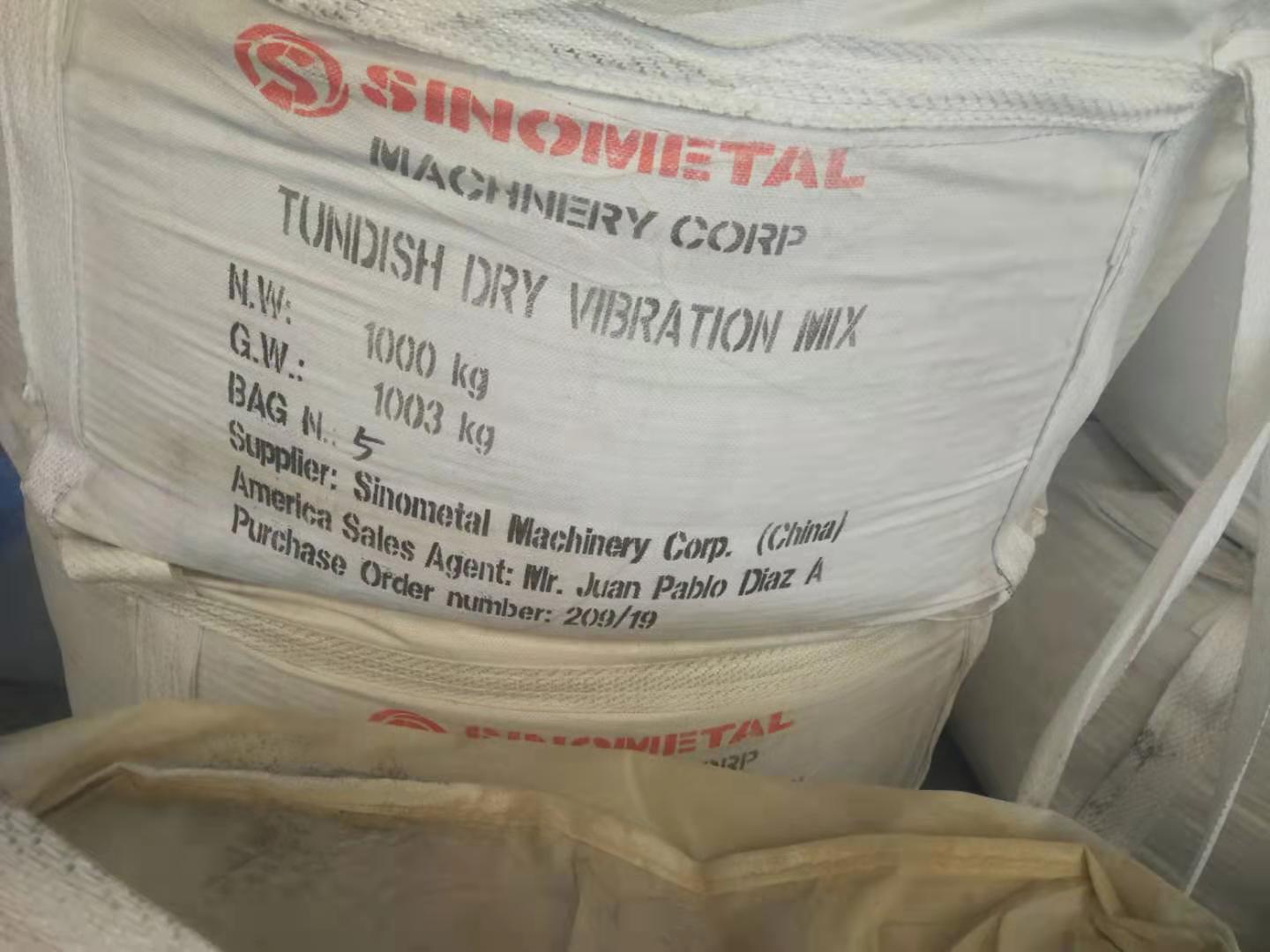Tundish Dry Vibration Mix

Product omschrijving
Tundish Dry Vibration Mix
1. Preparation before construction
(1) Check whether the gas, compressed air and industrial electricity are normal, whether there is leakage, and whether all valves are completely closed.
(2) Check if all kinds of control instruments and vibration motors are working properly.
(3) Check whether the raw material has agglomeration. If there is serious agglomeration, it should not be used; if there is a small amount of agglomeration, the agglomerate should be crushed before use, or discarded.
(4) The residue of the permanent lining surface of the tundish, residual steel and other debris must be removed.
(5) If there is a crack of ≥3mm in the permanent lining of the tundish, it must be repaired first, and the repairing material must be dried before construction.
(6) Evenly apply 2~3mm release agent (or waste engine oil + graphite) on the working lining tire.
2. Construction
(1) Turn the package according to the specified time and transport the tundish to the construction site.
(2) The dry material is transported to the construction site, and placed evenly around the tundish to be constructed, and the packaging pocket is opened.
(3) Construction starts when the wall temperature is lower than 100 °C. When the temperature is high, it must be cooled by a fan.
(4) Bottom of the construction package: Place the bricks, impact plates, stabilizers, retaining walls, and dams on the bottom of the package with welded steel frames or hard fiberboards (to later place the bricks and impact boards, etc.). The dry material is poured into the bottom of the package, and the material is smoothed with a shovel. The height of the dry material at the bottom of the package should reach the required thickness of the bottom of the package. The thickness of the dry material at the bottom of the package is 100 mm.
(5) Lifting mold tire: use the crane to lift the mold tire into the tundish, adjust the position of the mold tire by the positioning rod, and make the distance between the mold and the permanent liner of the tundish as the design thickness, and the dry thickness of the wall. It is 75mm, and the gap between the tire and the permanent lining is equidistant, and the error is less than 5 mm to prevent the working lining from being thinner and affecting the life. If the bottom of the dry material is not flat, if the tire is not vertical, the tire must be lifted, and then the bottom of the bag is re-padded. Install the slag wall and the dam retaining groove mold.
(6) Construction wall: After the dry materials packed in the small bag are placed along the various points of the tire, the layers are evenly layered at each point and poured into the gap between the package and the permanent lining, to the position of the mouth, dry material Do not drop too much (less than 300 mm per layer) to avoid segregation of dry materials. Turn on the vibration motor and continue to pour dry material until the dry material fills up. The motor vibration time is generally 5 minutes (depending on the motor excitation strength). For example, if there is a special reason during construction (for example, if a motor suddenly fails to work), it may cause some parts to be difficult to be tapped. It may be temporarily tempered with a stick such as steel brazing, tamping the dry material and appropriately prolonging the vibration time. . Solve problems in time afterwards. Do not pour the ropes and other debris during construction to ensure the safe use of the tundish.
(7) Low-temperature baking: open the air valve and blow it into the mold tire for 5~10min to ensure that the gas concentration in the mold tire is reduced below the explosion limit, and the air valve remains open; open the gas main valve, then open the gas sub-valve one by one and ignite, open Immediately after the valve, the ignition should be started. If there is any abnormality, immediately close the gas main valve and check it, then press the ignition program to i

